
The amount of light you have—measured in lumens—makes a big difference in how well workers can see, how safe the area is, and even how energy-efficient the whole setup ends
Reach out now for a free lighting consultation
Lighting a shipyard or dry dock is way more than just putting up a few floodlights and calling it a day. These areas are big, busy, and packed with heavy equipment, workers, and safety risks. Poor lighting can slow down operations, cause mistakes, and even lead to accidents. That’s why most shipyards follow specific lighting standards to make sure everything runs smoothly—day or night.
Let’s break it down step by step and figure out what goes into proper lighting for these massive industrial spaces.
Table of Contents
Toggle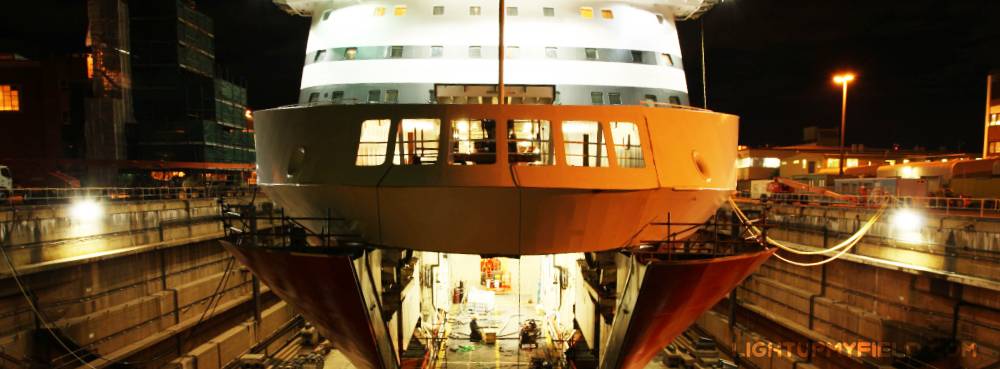
Shipyards aren’t like typical work sites that shut down at 6 p.m. Many operate 24/7, especially when a big vessel is in for repairs or maintenance and deadlines are tight. That means crews are out there in the middle of the night, often in harsh weather conditions. If the lighting isn’t right, everything slows down—or worse, accidents happen.
Think about it: guiding a 300-meter-long ship into position or inspecting a hull panel under dim lighting isn’t just inconvenient, it’s risky. According to industry data, poor visibility is linked to nearly 20% of workplace accidents in industrial zones, and shipyards are no exception.
When lighting falls short—say under 50 lux in an area that needs 300 lux—you’re asking workers to operate in semi-dark conditions. They can’t spot hazards like loose cables, tools on the ground, or moving machinery until it’s too late. A missed weld defect during low-light inspection can lead to costly rework or even safety issues at sea, which could run into hundreds of thousands of dollars.
The human eye strains in dim conditions, too. That means workers get tired faster, slowing productivity. One study shows that proper lighting can boost work speed by up to 15%, which is huge for projects where every hour counts.
It’s tempting to think brighter is always better, but that’s not true. Flooding an area with ultra-bright lights can cause glare, especially on wet decks or metal surfaces. Glare doesn’t just make it uncomfortable—it can blind crane operators or drivers for a split second, which is all it takes for an accident.
If light levels shoot past 1,000 lux in areas where workers only need around 300, it creates harsh contrasts and deep shadows. Ironically, this reduces visibility in certain spots, making it harder to gauge distances or read surface textures. Overly bright lighting can also cause eye fatigue, headaches, and long-term vision strain during 12-hour night shifts.
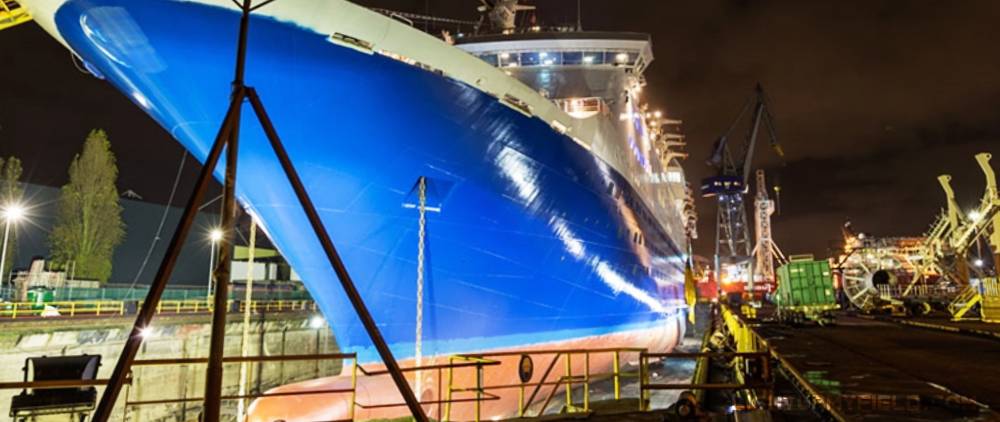
Different tasks demand different lighting levels, and when you’re working on ships that can stretch 300 meters or more, getting it right matters a lot. A good plan looks at lux levels, color temperature, uniformity, and fixture placement to make sure the space is safe and productive without wasting energy.
The brightness you need really depends on what’s happening in that area. For general movement areas—think walkways or storage spots—50 to 100 lux (roughly 5–10 footcandles) is usually fine. That’s bright enough for workers to see hazards and move safely without creating glare.
When you step into heavy repair zones, though, the game changes. Welders, painters, and mechanics need precision, so the target goes up to 300 to 500 lux. If the lighting falls short here, you risk mistakes that can lead to expensive rework or safety problems.
For inspection and quality control areas, you really need to crank it up. These zones often require 500 to 1,000 lux because inspectors need to spot the smallest weld cracks or paint inconsistencies. Missing those details can cost a fortune later.
To put it in perspective: a large dry dock spanning 10,000 square meters might need well over 1.5 to 2 million lumens in total, especially when lights are mounted 20 to 30 meters above the ground. That’s why planning fixture count and placement carefully is a must.
Color temperature might sound technical, but it’s basically about how the light looks—warm, neutral, or cool. In a shipyard, cooler tones in the range of 5000K to 5700K (close to daylight) work best. Why? Because they help workers stay alert and show colors accurately, which is critical for spotting defects.
On the other hand, warm light (around 3000K) creates a yellowish hue that can make surfaces look different than they actually are. That’s the last thing you want when checking coatings or paint jobs.
It’s not just about brightness—it’s about even coverage. A proper lighting setup avoids creating high-contrast zones where some areas are blazing bright and others are gloomy. For outdoor industrial setups like shipyards, the uniformity ratio should be about 3:1 or better. That means your brightest spots shouldn’t be more than three times brighter than the darkest ones.
Uneven lighting isn’t just uncomfortable for the eyes—it can lead to accidents because workers can’t judge depth or see obstacles clearly when moving between shadows and bright spots.
Here’s the big question everyone asks: Where should the lights go? For smaller docks, lights mounted along the edges at heights of 8 to 12 meters often do the job. But when you’re working with massive spaces or vessels, high-mast lighting is usually the better call.
High mast poles can go 20 to 30 meters tall, which gives a much wider spread of light and reduces harsh shadows. Fewer poles can cover more area, which also helps keep costs and clutter down.
Now, what about spacing? If you’re using 1000W LED floodlights pushing out about 130,000 lumens each and mounting them at around 25 meters, placing poles 40 to 50 meters apart generally delivers even coverage. For a very large dry dock, you might need 10 to 15 poles depending on layout and how much overlapping coverage you want.
Let’s be honest—keeping thousands of square meters lit for long shifts can burn a hole in your budget. The good news is that modern systems give you ways to keep energy use under control. Switching from metal halide to LEDs can cut power use by 60–70%, which is already huge.
But you can take it further. Add smart lighting controls, motion sensors, and dimming features so lights only run at full power when needed. During low-activity periods or late-night hours, dimming by even 20–30% can save thousands of dollars over a year. Some shipyards also go for zoned lighting, where they only light up areas that are active instead of blasting the entire dock 24/7.
| Area / Feature | Lux (Footcandles) |
|---|---|
| General Walkways & Storage | 50–100 lux (5–10 fc) |
| Heavy Repair Zones | 300–500 lux (30–50 fc) |
| Inspection & Quality Control | 500–1,000 lux (50–100 fc) |
| Color Temperature | 5,000–5,700K |
| Uniformity Ratio | 3:1 or better |
| High Mast Height | 20–30 meters |
| Typical Pole Spacing | 40–50 meters |
| Total Lumens for 10,000 m² Dock | 1.5–2 million lumens |
| LED Energy Savings vs Metal Halide | 60–70% |
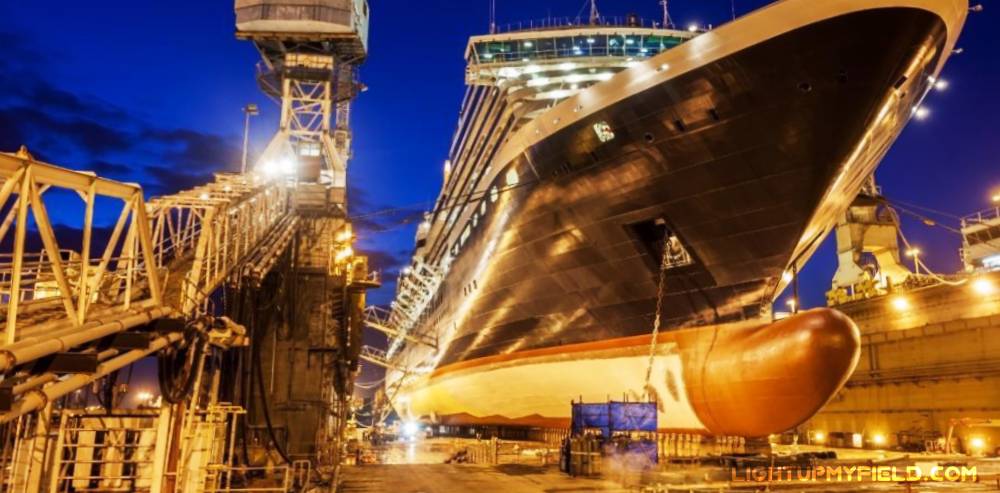
Even with a solid design, shipyard lighting can come with its share of headaches. These challenges usually show up after installation, especially if the system wasn’t tailored for the unique conditions of a marine environment.
Glare is one of the most common complaints from crews. When lights are too bright or aimed poorly, it can actually blind operators or reflect off wet steel surfaces, creating dangerous distractions. For crane operators or workers handling heavy gear, even a momentary loss of visibility can be a big deal.
High-mast lights, for instance, can throw intense beams that bounce back from freshly painted hulls or puddles in the dock, making things uncomfortable—and sometimes hazardous—for people on the ground. The trick here is to use fixtures with anti-glare optics and plan beam angles carefully so light goes where it’s needed without blinding anyone.
Another headache? Shadows. In a dry dock, you’ve got huge structures—ships, cranes, scaffolding—blocking light from certain angles. Even a well-placed high mast can’t do much when a 20-meter-tall ship is standing in the way. Those dark patches can hide trip hazards or make fine-detail work harder.
One way around this is adding supplemental lighting at lower levels or using portable towers to fill the gaps. It’s not always cheap, but it’s better than leaving workers to stumble around in the dark.
Let’s talk maintenance. Those massive poles holding high-mast lights look great—until something goes wrong. Changing out an LED driver or fixture often means bringing in a lift or crane, which takes time and costs extra. If you’ve got 20 or 30 poles spread across a yard, you can see how this adds up fast.
Using fixtures with a long lifespan (up to 100,000 hours) and easy-access designs can cut down on these headaches. But even then, planning for periodic servicing is part of the deal.
Shipyards are brutal environments for lighting. Salt-laden air and constant moisture mean corrosion is practically guaranteed unless you plan ahead. Standard steel or aluminum housings will start rusting in no time. That’s why marine-grade coatings and IP66 or higher enclosures are a must.
If you skip this step, you’ll end up replacing fixtures way sooner than expected—and trust me, swapping out a corroded light 25 meters up isn’t anyone’s idea of fun.
Finally, let’s talk money. Lighting a big shipyard isn’t cheap, and energy use can spiral out of control if the system isn’t optimized. Imagine running 50 high-output LED fixtures at 1000 watts each for 12 hours a day. That’s about 600 kWh daily, which, at $0.12 per kWh, adds up to over $26,000 per year—and that’s just for the lights.
Without smart controls like dimming or zoning, that bill can get even uglier. It’s one reason why so many yards are shifting to LEDs with motion sensors or smart systems, which can slash those costs by 30–40% easily.
Lighting up a shipyard or dry dock is a big investment, and it’s not just the lights you’re paying for. Between fixtures, installation, and ongoing electricity, the costs can add up fast. Understanding where the money goes can help you plan smarter and avoid surprises later.
Let’s talk about the gear first. High-quality LED floodlights for shipyards usually run between $500 and $1,200 each, depending on wattage, durability, and features like smart dimming or anti-glare optics. If you want fixtures that can handle harsh saltwater environments, expect to be at the higher end of that range.
Now picture a large dry dock that needs around 80 to 100 LED fixtures to hit recommended lux levels. At that price point, you’re looking at roughly $40,000 to $100,000 just for the lights. And that’s before you even think about poles, brackets, or wiring hardware.
High-mast poles themselves aren’t cheap either. A heavy-duty 25-meter pole can cost $3,000 to $6,000, depending on the design and material. Multiply that by 15 to 20 poles for a big yard, and suddenly you’ve added another $60,000 to $120,000 to the bill.
Mounting and wiring those lights isn’t like hanging a fixture in your garage. You need cranes or lifts for high-mast lights, plus skilled labor for electrical connections and pole foundations. Installation per high mast pole can range from $1,000 to $2,500, depending on the complexity of the site.
If you’re installing 20 poles, that’s another $20,000 to $50,000 added to the project. And don’t forget electrical upgrades. Older shipyards often need extra capacity for the lighting load, and upgrading panels or running new underground cabling can add anywhere from $10,000 to $30,000.
Even with efficient LEDs, powering a big yard burns through energy. A 1000W LED floodlight running 12 hours a day uses about 12 kWh daily. At an average rate of $0.12 per kWh, that’s about $1.44 per day per light.
Now multiply that by 80 fixtures and you’re looking at $115 per day, or about $3,450 a month. Over a full year, that’s more than $40,000 just in electricity costs—and that’s assuming you’re running them only 12 hours a day. Some shipyards keep lights on 16 or even 24 hours during peak repair seasons, which can easily push the annual cost toward $60,000 or more.
It’s easy to forget about ongoing upkeep, but it’s part of the budget too. Even though LEDs can last 50,000 to 100,000 hours, things like drivers, sensors, or corrosion-related issues still need attention. Budget at least a few thousand dollars a year for maintenance, especially if you’re in a salty coastal environment where metal doesn’t stay pretty for long.
| Cost Category | Range |
|---|---|
| LED Fixture (each) | $500 – $1,200 |
| LED Fixtures (80–100) | $40,000 – $100,000 |
| High-Mast Pole (each) | $3,000 – $6,000 |
| Poles (15–20) | $60,000 – $120,000 |
| Installation per Pole | $1,000 – $2,500 |
| Installation (20 poles) | $20,000 – $50,000 |
| Electrical Upgrades | $10,000 – $30,000 |
| Electricity per Day | $115 |
| Electricity per Month | $3,450 |
| Electricity per Year | $40,000 – $60,000 |
Standard floodlights do a great job for most of the yard, but sometimes you need something a little different to solve unique problems. That’s where specialized lighting solutions come into play. These options are designed for flexibility, safety, and cost savings in specific situations.
If you’re tired of running up the power bill or dealing with miles of cabling, solar lighting can be a real game-changer. These lights work best in areas that don’t need high-intensity illumination all night—think perimeter fencing, remote storage zones, or pathways where workers just need to move safely.
The best part? No wiring. That means zero trenching costs, which can easily save thousands on installation. A good-quality solar LED floodlight runs anywhere from $300 to $800 per unit, and once it’s up, your operating cost is practically nothing. For shipyards in sunny climates, these lights can cut electricity use significantly.
Of course, they’re not perfect. Solar lights rely on batteries, so runtime can drop during long cloudy stretches, and they’re generally not powerful enough for heavy repair areas. Still, for secondary zones, they’re a solid money-saving option.
Sometimes you just need light right here, right now, and running wires isn’t an option. That’s when portable light towers step in. These units usually have four to six high-powered LED lamps mounted on a telescoping mast that can extend up to 30 feet. Most are powered by a diesel generator, but battery and hybrid models are becoming popular too.
A single tower can pump out 100,000 to 150,000 lumens, which is plenty for an emergency repair zone or an off-site job. Rental costs usually hover around $100 to $150 per day, or you can buy one outright for $8,000 to $15,000 depending on the size and features.
They’re incredibly handy during hull inspections, crane operations, or storm damage repairs when you don’t have time to install permanent fixtures. Plus, they’re designed for rugged environments, so they can handle salty air and rough handling.
Shipyards aren’t just big open spaces—they’re full of fuel, solvents, and flammable chemicals, which means some zones need extra care. For these areas, explosion-proof lighting is a must. These fixtures are built to contain any spark or arc inside the housing, preventing ignition in hazardous environments.
The catch? They’re not cheap. A single ATEX or IECEx-certified LED fixture can cost $500 to $1,500, depending on wattage and certifications. But skipping them isn’t an option when worker safety and compliance are on the line. They’re usually installed in fuel storage areas, painting zones, or enclosed compartments where gases might accumulate.
Getting lighting right isn’t just about checking a box. It impacts safety, speed, and overall costs. A well-designed system cuts accidents, reduces rework, and saves a fortune on energy bills. On the other hand, bad lighting setups lead to higher maintenance costs, wasted energy, and unhappy crews.

The amount of light you have—measured in lumens—makes a big difference in how well workers can see, how safe the area is, and even how energy-efficient the whole setup ends
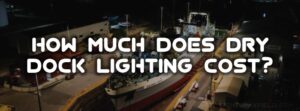
Dry docks are massive, complex, and often run around the clock. Proper illumination makes the work safer and more efficient, but it also comes with a price tag. So, how
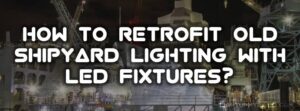
Shipyards run almost around the clock, and that means lighting plays a huge role in how safe and efficient the work gets done. If you’re still running those old metal

When it comes to lighting up a shipyard, the choices you make can seriously impact safety, productivity, and even costs. One option that pops up a lot is high mast

The layout, the spacing, and even the angle of the lights all play a big role in how well the space functions after dark. The question many shipyard managers ask
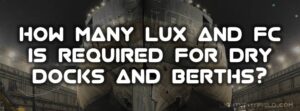
Lighting in dry docks is about making sure work can be done safely and efficiently, day or night. From massive hull repairs to detailed inspections, every task needs the right

When you’ve got massive open areas, heavy machinery, moving vehicles, and workers pulling long shifts, the wrong lighting setup can slow everything down—or worse, cause accidents. The goal is to

When it comes to working in shipyards and dry docks, lighting isn’t just about being able to see what you’re doing—it’s also about safety, efficiency, and getting the job done